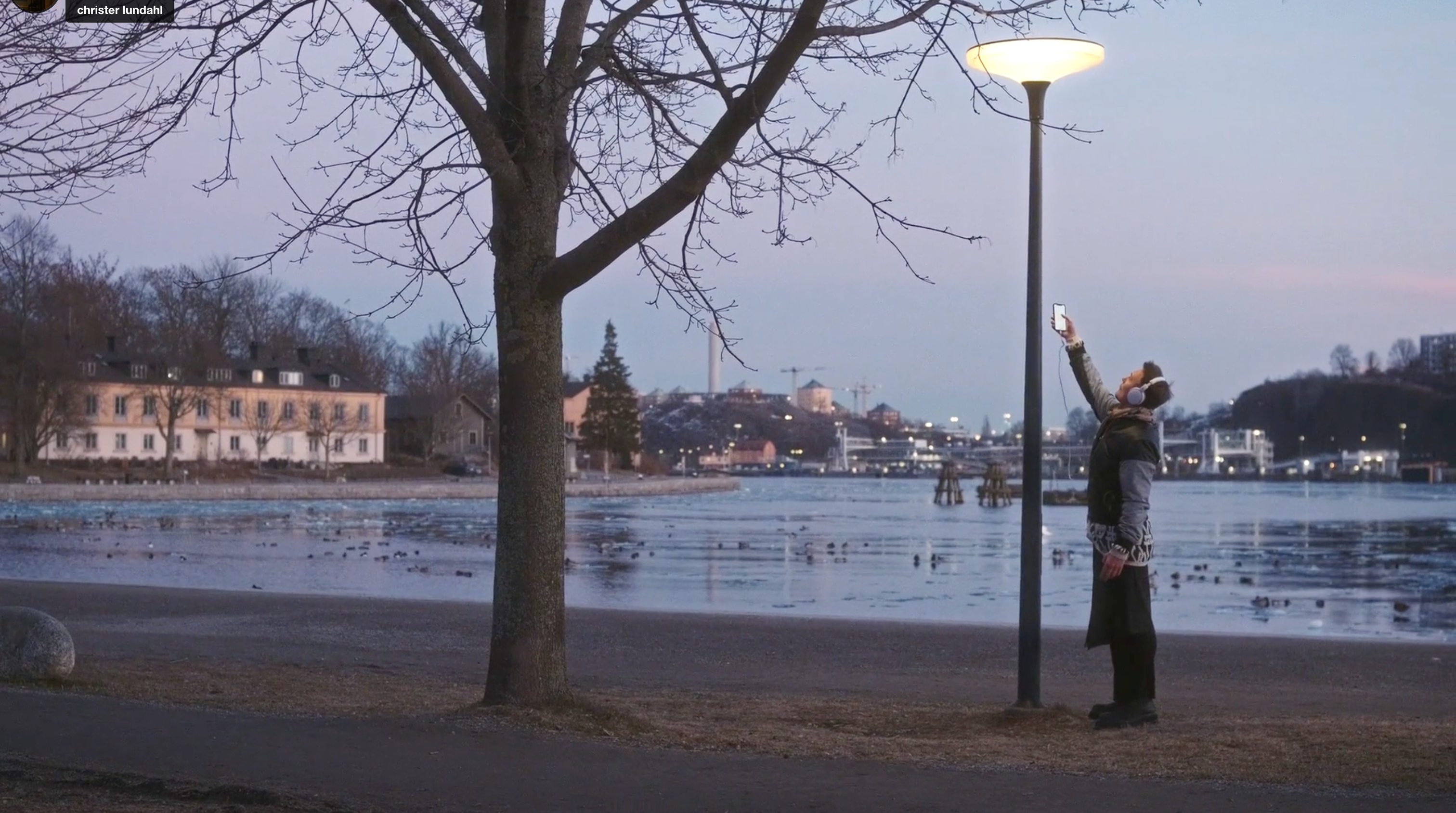Streetlight Harvesters2022 - ongoing
A Monstrous Creature
Download full description (PDF)
Communication via technology always has to be passed through the monstrous bodies of technology.
Human settlements are becoming increasingly dense, while at the same time people are becoming increasingly lonely. The biotopes of animals coincide with those of humans, but this environment is deceptive and fraught with risk for individuals as well as for entire species. How do we take care of each other? Are we even aware of each other's existence? How far does our empathy extend? Is the shared light an antidote to the lonely darkness? The light of the street lamp, suddenly irresistible, turns out to be a portal that bridges species boundaries and leads to new worlds of experience.
Every night at twilight, in several places along the curved line which on the globe divides the day from night; the 'terminator curve' or what the human experience commonly refers to as the twilight zone - a huge mythological nocturnal organism without a name arises, in connection with the switching on of the street lights. The creature dies at dawn but then reappears in the evening and keeps the cities away from darkness. The streetlights are part of her body. As the city's artificial lights keep her alive, she can be seen all the way from space, satellite photographs show her body stretching across vast tracts of land and continuing to grow every year, and by 2025 she is predicted to swallow almost entire country's land mass.
Related to the Chimera, a creature in Greek mythology, often used to describe a creature that is a hybrid of several animals and often composed of completely different parts, our electrically breathing creature grows as more streetlights are connected to her and more local species, including humans, are lured out by the light and form an ecological unit around their host - a holobiont.
A creature without a name but with a hypnotic effect on humans and who has the power to alter human circadian rhythms, fertility, sleep and hormone regulation. She paralyzes the fertility of insects and reduces their birth rate, she disorients migratory birds. She eats the darkness and plucks the stars from the night. The lack of darkness anthropomorphizes the night sky, prevents us from seeing other suns, and keeps us from imagining the potential distant lifeworlds of others in the sky.
Practical Project Description
Street Light Harvesters controls urban street lighting, within the framework of a public site-specific performative artwork that is activated around dusk, during the darker part of the year. It is a cross-disciplinary collaboration with Untold Garden to develop a digital application that connects visitors' phones with the city's network of streetlights in selected locations (smart bulbs and Arduino microcomputers are installed in the lights). When you approach a street lamp, it destabilizes and leaves you in temporary darkness, as if all the light has been swallowed up by the mobile phone. Among the technical possibilities that a smartphone provides, uses the artwork of, for example, the camera to read the distance to things in the environment that can give the illusion that a certain object, tree or stone makes a sound when the phone reaches out. Streetlights that have been "prepared" can be searched for with a GPS map, which can also create "hotspots" in the area around the streetlights, which are tracked through the phone's GPS in combination with the phone's camera, which reads the landscape for more precise positioning.

Streetlight Harvesters Credits
Streetlight Harvesters is a collaboration between co-artists Lundahl & Seitl + Untold Garden
Dramaturge: Rachel Alexander
Composer: Hara Alonso
Producer: Emma Ward